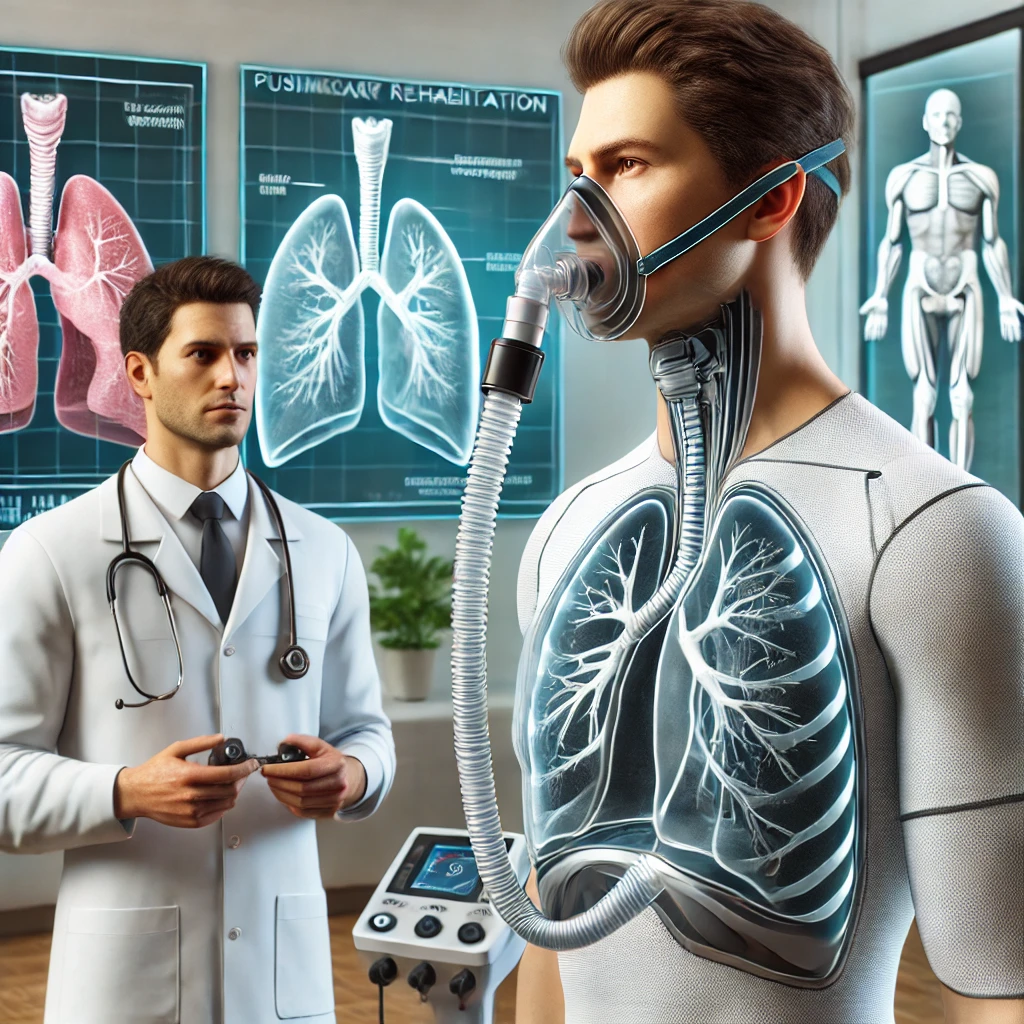Pulmonary rehabilitation is a vital treatment for individuals with chronic lung diseases such as chronic obstructive pulmonary disease (COPD), pulmonary fibrosis, and asthma. This comprehensive program improves lung function and enhances the quality of life through a combination of exercise, education, and support. It is an essential approach to managing lung diseases and can significantly benefit individuals by helping them breathe easier and maintain an active lifestyle.
In this blog, we’ll explore the role of pulmonary rehabilitation in managing lung diseases, its benefits, and how specific exercises can help individuals with respiratory issues lead healthier, more active lives.
What is Pulmonary Rehabilitation?
Pulmonary rehabilitation is a structured and medically supervised program designed to help individuals with chronic lung diseases manage their symptoms and enhance their overall well-being. It involves a combination of different therapeutic approaches, including physical exercises, education on lung disease management, psychological support, and nutritional counseling. The primary goal of pulmonary rehabilitation is to improve a patient’s exercise capacity, reduce symptoms such as shortness of breath, and enhance overall quality of life.
This program is tailored to meet each patient’s unique needs, ensuring they receive the most effective treatment to strengthen their lungs and improve endurance. Pulmonary rehabilitation exercises are a crucial component, specifically designed to help strengthen respiratory muscles, increase stamina, and improve oxygen intake.
Why Pulmonary Rehabilitation Exercises Are Essential
Pulmonary rehabilitation exercises play a crucial role in improving lung function and helping individuals lead more independent and fulfilling lives. By incorporating these exercises into a structured rehabilitation program, patients can experience noticeable improvements in their breathing efficiency, overall strength, and stamina.
Key Benefits of Pulmonary Rehabilitation Exercises
- Improved Lung Function
- Strengthens the diaphragm and other breathing muscles.
- Enhances oxygen exchange, making breathing easier.
- Reduced Shortness of Breath
- Increases respiratory muscle strength, allowing for deeper, more efficient breaths.
- Helps patients engage in daily activities with reduced breathlessness.
- Increased Stamina and Endurance
- Boosts overall energy levels, allowing patients to remain active for longer periods.
- Helps improve mobility and physical fitness.
- Better Quality of Life
- Reduces fatigue and anxiety related to lung disease.
- Improves mental and emotional well-being through better physical health.
Types of Pulmonary Rehabilitation Exercises
A well-rounded pulmonary rehabilitation program consists of different types of exercises designed to enhance lung function and physical endurance. These exercises focus on increasing the patient’s ability to perform daily tasks with ease.
Aerobic Exercises
Aerobic exercises are designed to improve cardiovascular health and lung capacity. Some of the most common and beneficial aerobic exercises include:
- Walking: A simple, low-impact activity that builds endurance and improves circulation.
- Cycling: Stationary cycling enhances lung function and is easy on the joints.
- Swimming: A full-body workout that helps improve lung capacity and overall endurance.
Strength Training
Strength training is essential for maintaining muscle function and improving the ability to perform daily activities. Common strength training exercises include:
- Resistance training: Using light weights or resistance bands to build muscle strength.
- Breathing exercises: Techniques such as pursed-lip and diaphragmatic breathing that strengthen respiratory muscles and improve breath control.
Both aerobic and strength training exercises can be customized to each patient’s fitness level, ensuring they remain safe and effective.
How Pulmonary Rehabilitation Helps Specific Conditions
Pulmonary rehabilitation is beneficial for individuals with a variety of chronic lung conditions. Here’s how it helps with some of the most common diseases:
Chronic Obstructive Pulmonary Disease (COPD)
COPD is a leading cause of disability worldwide. Pulmonary rehabilitation exercises help slow disease progression, improve lung function, and reduce flare-ups. These exercises also enable patients to build endurance, making daily activities more manageable.
Pulmonary Fibrosis
Pulmonary fibrosis causes lung scarring, which can lead to breathing difficulties. Rehabilitation exercises help patients maintain lung function, improve mobility, and enhance their quality of life, despite the disease’s progression.
Asthma
Asthma patients benefit from pulmonary rehabilitation by improving their lung function and reducing the severity of asthma attacks. Rehabilitation exercises strengthen respiratory muscles, increase stamina, and promote better breathing techniques, helping prevent exacerbations.
Getting Started with Pulmonary Rehabilitation
If you or a loved one is living with a lung disease, pulmonary rehabilitation can make a significant difference in symptom management and overall well-being. A healthcare provider will assess your condition and recommend a personalized rehabilitation program tailored to your needs.
At Interstate Pulmonary, we provide expert guidance and customized rehabilitation programs to support better respiratory health. Our team of specialists is committed to helping you achieve better lung function and improve your overall well-being.
Additional Tips for Maintaining Lung Health
Apart from engaging in pulmonary rehabilitation exercises, adopting a healthy lifestyle can further improve lung health. Here are a few additional tips:
- Quit Smoking: If you smoke, quitting is the most effective way to slow lung disease progression and improve lung function.
- Maintain a Healthy Diet: Eating a well-balanced diet rich in vitamins and antioxidants helps strengthen the immune system and supports lung function.
- Stay Hydrated: Drinking plenty of water helps thin mucus in the lungs, making it easier to breathe.
- Monitor Air Quality: Avoid exposure to pollutants and allergens that can trigger breathing difficulties.
Conclusion
Pulmonary rehabilitation exercises are essential for managing chronic lung diseases such as COPD, pulmonary fibrosis, and asthma. By improving lung function, reducing shortness of breath, and increasing stamina, these exercises significantly enhance the quality of life for individuals with respiratory conditions.
If you or someone you know is living with a lung disease, consult a healthcare provider to begin pulmonary rehabilitation and experience its benefits firsthand. For more details, visit Interstate Pulmonary to discover how we can support your journey to better lung health today.
